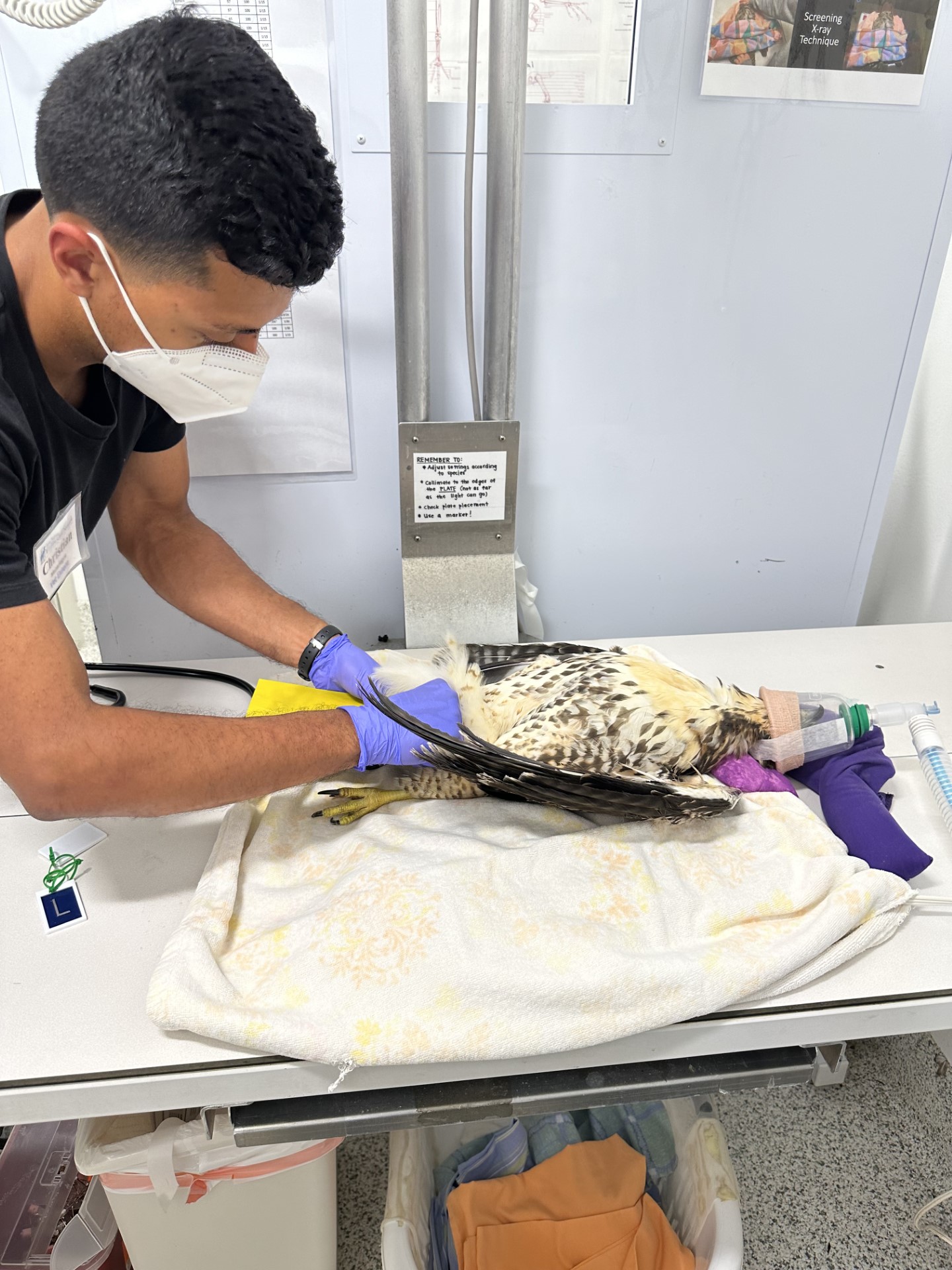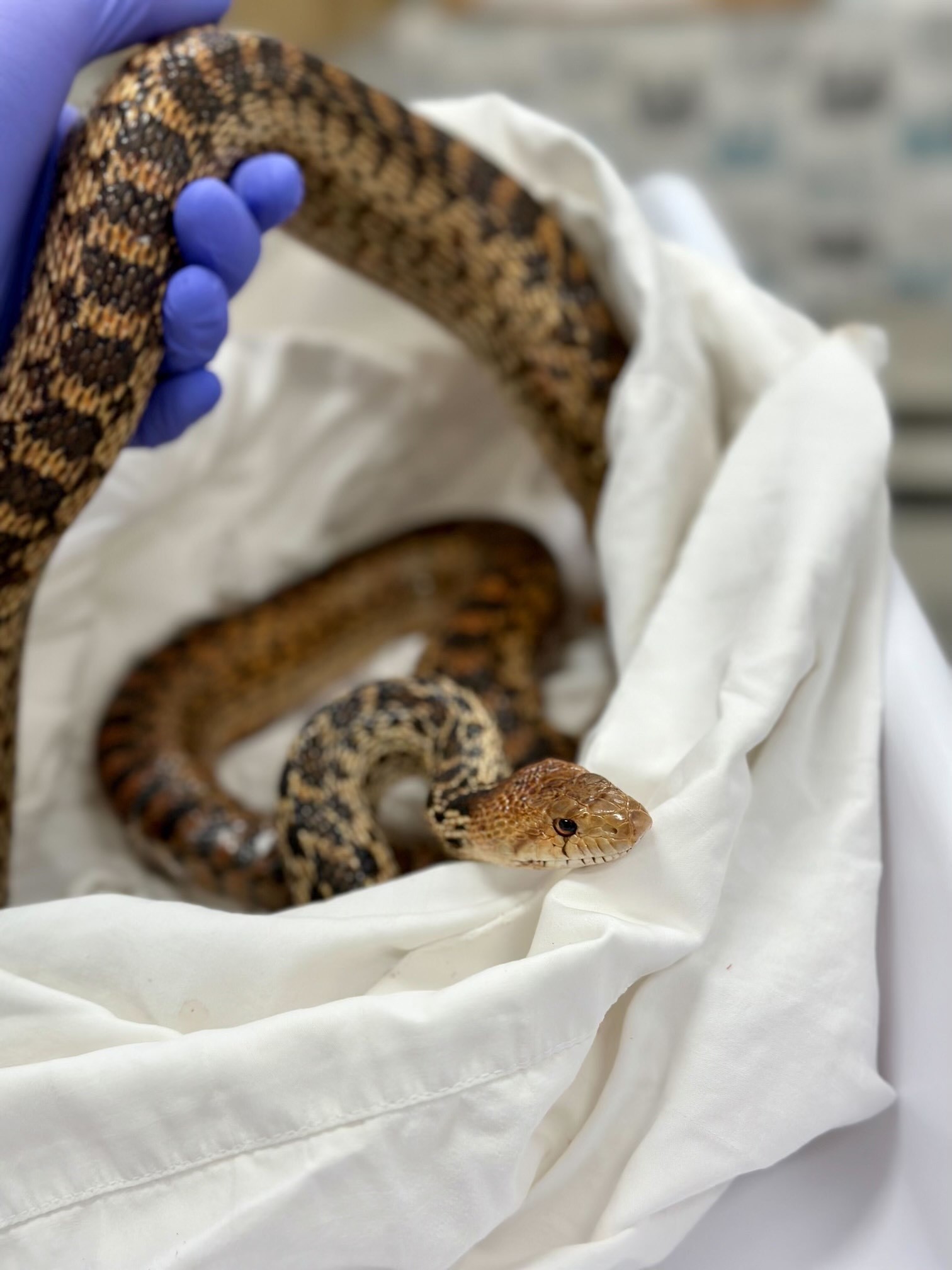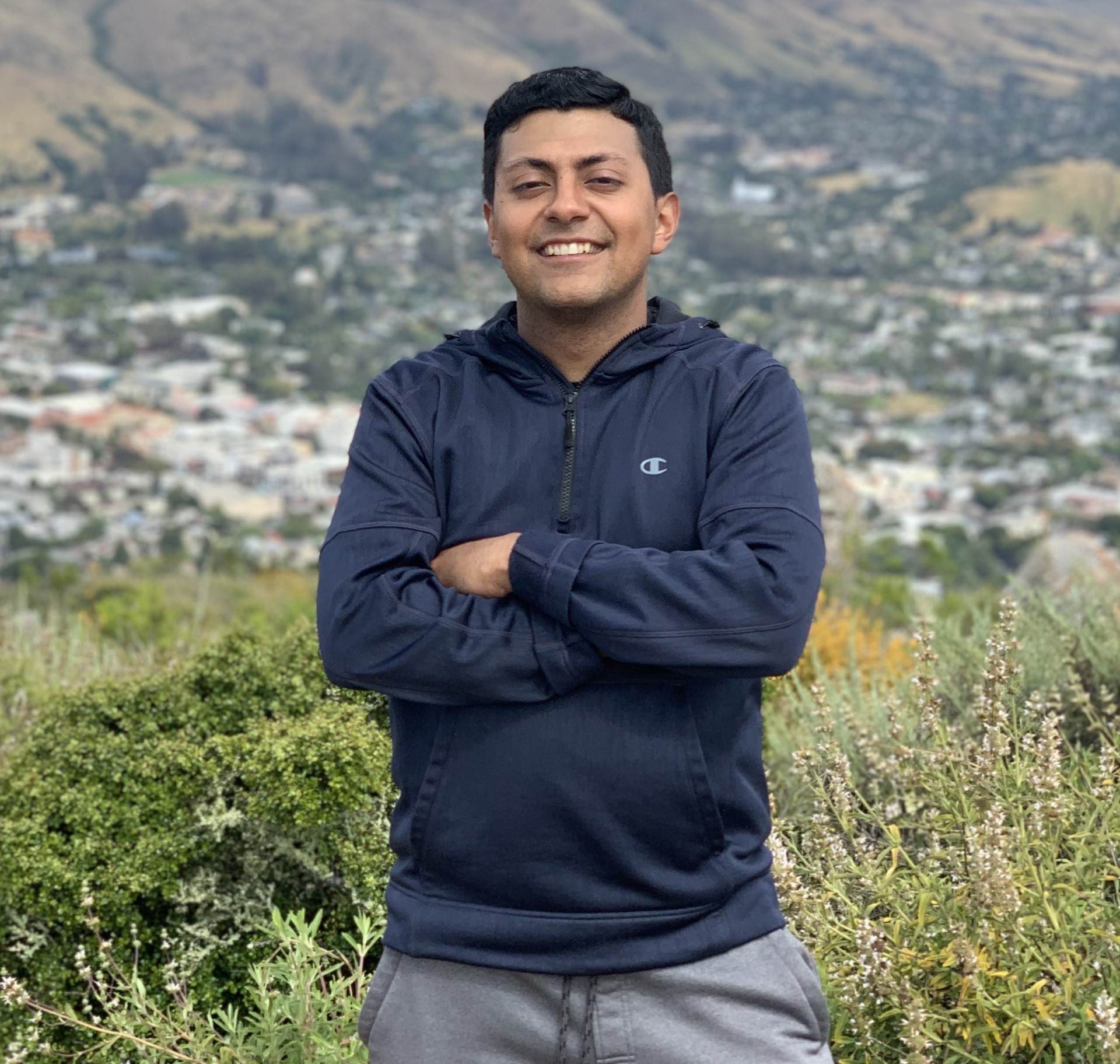A “Wild” Time in Santa Barbara, California
By Christian Mazariegos, DVM ‘25
An Extraordinary Organization Achieving Extraordinary Results
Santa Barbara is widely regarded as one of the most breathtaking coastal cities within the state of California. Home to perfect weather, beautiful beaches, five-star restaurants, and lively bars, it’s pretty safe to assume that I had a “wild” time and partied it up in this amazing city during the ten weeks I spent living there. Well, not exactly.
Instead, I had a “wild” time treating wildlife at the Santa Barbara Wildlife Care Network (SBWCN) as a veterinary extern. SBWCN is a non-profit organization with a mission to rescue and rehabilitate injured, sick, orphaned, and oiled wildlife to be returned back to the wild. This organization serves Santa Barbara and Ventura Counties and plays a key role in educating the public about co-existing with our wild neighbors.
As a veterinary extern, I mainly worked with the veterinary team and alongside Dr. Rebecca Aldoretta, Director of Veterinary Services. Some of the responsibilities I had included: performing physical exams on newly admitted patients, creating treatment plans, placing splints or wraps to immobilize fractures, drawing blood and running blood work, performing fecal flotations to detect parasites, taking radiographs, and monitoring anesthesia during surgical procedures. I also participated in procedures such as orthopedic surgery, laceration repairs, and general soft tissue surgery.
Many of our patients presented with problems directly related to human interference with wildlife. We treated seabirds that were entangled in fishing lines and/or that had ingested fishhooks, mammals that were caught by snap traps, songbirds that suffered injuries from domestic pets, raptors that were struck by cars, and much more. Each patient was examined upon admission and a treatment plan would then be developed, tailored to the specific medical needs of that individual.
A Great Horned Owl with Greater Problems
One patient that I grew to be very fond of this summer was Great Horned Owl (GHOW) 23-1520 (SBWCN’s 1520th patient of the year 2023). GHOW 23-1520 was found by the road, unable to fly. A physical exam revealed a laundry list of problems: dehydration, a laceration on its right stifle joint, a severely swollen right eye, and a wound very close to its right ear. Throughout our examination, the bird overall was very quiet and unresponsive. Based on the patient’s history and condition, this great horned owl was suspected to have been struck by a car and was suffering from head trauma.
Various treatments were administered in an attempt to improve GHOW 23-1520’s condition. The owl struggled to eat on its own, so we offered frequent hand feedings to provide the bird with nutritional support. Pain medications, anti-inflammatory drugs, and antibiotics were also prescribed.
To address the head trauma, Dr. Aldoretta placed an interosseous catheter in one of the long bones within the wing of the owl so that hypertonic saline could be administered to reduce swelling in the brain. The swollen right eye was treated with anti-inflammatory eye drops, and the laceration on the right stifle joint was repaired surgically. Unfortunately, the wound that was close to the owl’s right ear became infected, so we had to increase the frequency of our bandage changes and start to incorporate silver alginate dressing, which has effective antimicrobial properties.
With time and expert care from SBWCN’s staff, a resilient GHOW 23-1520 fully recovered from its injuries and was successfully released back to the wild. It was incredibly rewarding for all of us to see this majestic great horned owl back home. It’s moments like this that make the field of wildlife rehabilitation medicine special, teaching us what the power of compassion and love can accomplish, especially when directed toward our patients.
There is Always Strength in Numbers
I want to thank SBWCN and their Cariño Veterinary Program for providing me with the opportunity to learn more about wildlife rehabilitation medicine, and Jake Holshuh ‘67, DVM ’69, who sponsored this experience through the Student Support Fund. I also want to thank proactive members of the public who have rescued endangered wildlife, who volunteer their time at a wildlife rehabilitation clinic, and/or who have donated to support the treatment of wildlife in need. Rehabilitating wildlife takes a village, and this life-saving work would not be possible without these compassionate individuals.
This externship was an amazing experience and solidified my desire to become a wildlife veterinarian at a non-profit wildlife rehabilitation organization such as SBWCN. As a member of society, I certainly contribute to the negative impacts that human activity has on our wildlife. However, by serving as a wildlife veterinarian, hopefully I can “reverse” some of the harm our wildlife endures. I look forward to working with the public and volunteers, interns, and rehabilitation staff of any organization I become a part of in the future when I graduate from veterinary school. I know that one day, together, we will make a difference in this world and save wild lives.
Christian Mazariegos, class of 2025, is a third-year veterinary student at Cornell University College of Veterinary Medicine. He graduated from California Polytechnic State University, San Luis Obispo in 2021 with a BS in Animal Science. Christian has a strong interest in wildlife rehabilitation medicine and hopes to become a wildlife veterinarian at a non-profit wildlife clinic.



